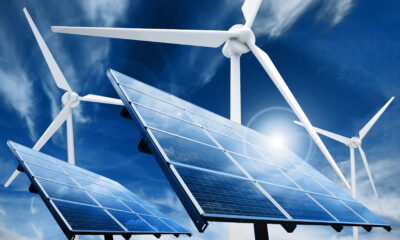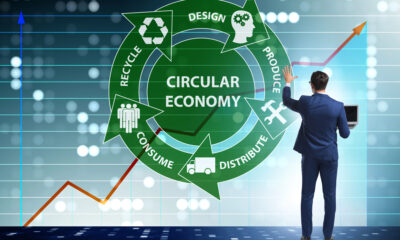

Features
How fast is sea level rising?
Sea level rise is being driven by warming oceans, melting mountain glaciers and the loss of the Greenland and Arctic ice sheets, the Royal Society explains in a guide that looks at climate change, including how fast sea levels are rising.
How fast is sea level rising?
Long-term measurements of tide gauges and recent satellite data show that global sea level is rising, with best estimates of the global-average rise over the last two decades centred on 3.2 mm per year. The overall observed rise since 1901 is about 20 cm.
This sea-level rise has been driven by (in order of importance): expansion of water volume as the ocean warms, melting of mountain glaciers in most regions of the world, and losses from the Greenland and Antarctic ice sheets. All of these result from a warming climate. Fluctuations in sea level also occur due to changes in the amounts of water stored on land. The amount of sea level change experienced at any given location also depends on a variety of other factors, including whether regional geological processes and rebound of the land weighted down by previous ice sheets are causing the land itself to rise or sink, and whether changes in winds and currents are piling ocean water against some coasts or moving water away.
The effects of rising sea level are felt most acutely in the increased frequency and intensity of occasional storm surges. If CO2 and other greenhouse gases continue to increase on their current trajectories, it is projected that sea level may rise by a further 0.5 to 1 m by 2100. But rising sea levels will not stop in 2100; sea levels will be much higher in the following centuries as the sea continues to take up heat and glaciers continue to retreat. It remains difficult to predict the details of how the Greenland and Antarctic Ice Sheets will respond to continued warming, but it is thought that Greenland and perhaps West Antarctica will continue to lose mass, whereas the colder parts of Antarctica could start to gain mass as they receive more snowfall from warmer air that contains more moisture. Sea level in the last interglacial (warm) period around 125,000 years ago peaked at probably 5 to 10 m above the present level. During this period, the polar regions were warmer than they are today. This suggests that, over millennia, long periods of increased warmth will lead to very significant loss of parts of the Greenland and Antarctic Ice Sheets and to consequent sea level rise.
For more information from the Royal Society’s guide click here.
Photo: Moyan Brenn via Flickr


 Economy12 months ago
Economy12 months agoSustainable Food Packaging Solutions For a Circular Economy

 Energy10 months ago
Energy10 months agoThe Role of Renewable Energy in Commercial Real Estate

 Economy11 months ago
Economy11 months agoWhy Collaboration is Key for a Sustainable Circular Economy

 Energy10 months ago
Energy10 months agoHow Energy Referral Programs are Saving The Planet… And Your Bank Account!


















